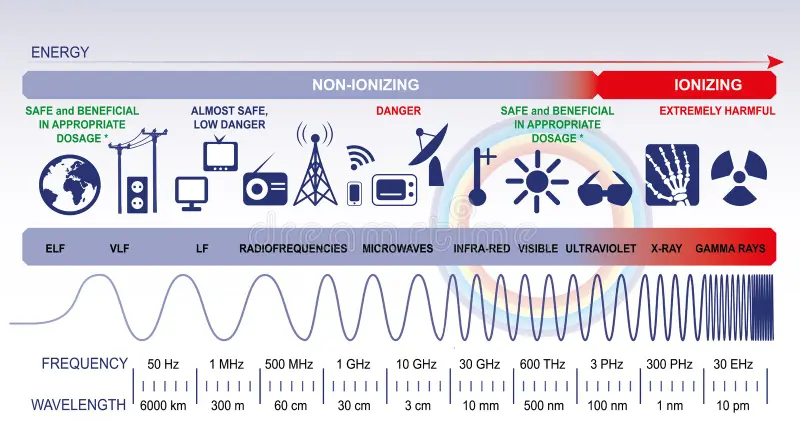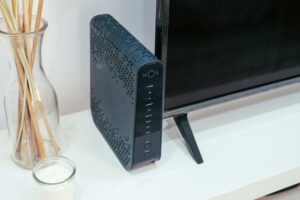Fields (And Why Protecting Our Kids Still Matters)
Hey mama,
I’ll be honest with you—my journey into understanding EMF started with pure mom intuition. You know that feeling when you read something online that just clicks in your mind? That was me three years ago when I stumbled across an article about WiFi radiation and its potential effects on developing brains.
I looked around my house and felt overwhelmed. iPad charging in the kitchen, buying a baby monitor for my upcoming baby’s arrival, WiFi router humming 24/7 in the living room. My husband having multiple phones, radio systems and cameras on him most hours of the day. Had I been unknowingly stressing our bodies and nervous system to something harmful that we couldn’t see?
But here’s what I’ve learned since then: the EMF story isn’t just about fear—it’s about balance. And surprisingly, it’s not all bad news.
Wait, EMF Can Actually Help People?
I know, I know. After all the scary headlines, this might sound crazy. But stick with me here, because understanding both sides of electromagnetic fields has completely changed how I approach this topic with my family.
Recently, I had the opportunity to learn from a trusted neuroscientist about all the positive things he’s doing to treat veterans and addicts on reprogramming of the brain using EMF treatment programs. I was intrigued!
It turns out that electromagnetic fields have been helping people heal for decades. Doctors use them to:
- Regenerate bone tissue (FDA-approved for fractures that won’t heal)
- Treat depression and anxiety without medication
- Reduce chronic pain and inflammation
- Help athletes recover faster from injuries
- Create detailed body scans without harmful radiation
Even NASA has researched EMF therapy to help astronauts maintain muscle and bone health in space!
So What Makes EMF “Good” vs “Bad”?
This was the lightbulb moment for me. EMF isn’t inherently dangerous—it’s all about how it’s used. Think of it like the sun: we need sunlight for vitamin D and healthy sleep cycles, but we wouldn’t let our kids play outside all day without sunscreen, right?
Medical EMF is like controlled sunlight: It’s intentional, targeted, carefully timed, and monitored by professionals.
Daily tech EMF is like constant sun exposure: It’s passive, ongoing, often unnecessary, and we rarely think about the cumulative effects.
The difference isn’t just what kind of electromagnetic field we’re talking about—it’s the intensity, duration, and proximity to our bodies.

The Mom Reality Check: Where EMF Becomes a Problem
Here’s where my mama bear instincts really kicked in. While doctors are using EMF to heal, us and our kids are swimming in a sea of it every single day from sources that aren’t nearly as carefully controlled.
The biggest culprits in our homes:
WiFi routers that broadcast radiation 24/7, even when nobody’s online (and mine was literally sitting next to my smart TV in my bedroom—yikes!)
Cell phones pressed against little heads during video calls with grandparents, sitting in our pockets, or charging next to us every night bedside
Bluetooth everything: AirPods, smartwatches, speakers, even some baby monitors and toys
Smart meters pulsing radiation into our homes every few minutes (often without us even knowing when they were installed)
Tablets and laptops on laps, in beds, held close to our bodiees for hours at a time
The research on health effects is still evolving, but what we do know makes me want to be cautious—especially with kids. Studies suggest that prolonged exposure might contribute to sleep problems, difficulty concentrating, and other issues. And children’s developing brains and thinner skulls make them more vulnerable than adults. Learn more here!
The Balanced Approach That Actually Works
After three years of research, countless conversations with other moms, and way too many Google rabbit holes, here’s what I’ve settled on: informed awareness without fear.
I’m not throwing our devices in the trash or moving to a cabin in the woods (though some days that sounds tempting!). Instead, I’m making simple, practical changes that reduce unnecessary exposure while still letting us enjoy the benefits of technology.
Common daily practices to reduce exposure in your home:
Nighttime boundaries: WiFi goes off when the kids go to bed. Phones charge in the kitchen, not bedrooms. Use old-school alarm clocks instead of phones on nightstands.
Mindful device use: FaceTime calls happen at the kitchen table with the phone propped up, not held against little faces. iPad time happens on a table or lap desk, not directly on bodies.
Wired when possible: Use ethernet cables for computers when working from home. Corded headphones for music and audiobooks.
Smart swaps: Analog baby monitors instead of WiFi-enabled ones. Regular watches instead of smartwatches for the kids.
Protection tools: EMF-modulating devices for all devices and near exposure hot-spots. I’ve even invested in some whole-home technology that helps neutralize EMF without blocking it since we do still need our devices to function.
Nature time: Spending time outside, barefoot when possible, seems to help bodies reset from all the artificial electromagnetic noise.
Teaching Kids About Balance, Not Fear
One thing I’m really intentional about is how parents can talk to their children about this. I don’t want kids growing up afraid of technology—it’s an amazing tool that will be part of their lives forever. But I do want them to understand balance.
I recommend talking about “tech breaks” the same way we talk about needing breaks from the sun. You can discuss why we put devices away at bedtime just like we brush our teeth—it’s a healthy habit that helps our bodies work their best.
My niece now automatically puts her phone on the table during video calls instead of holding it close. My toddler understands why she can only watch her iPad for road trips and why I have these beautiful devices around our home and to not play with them. Learning to be conscious consumers of technology rather than passive recipients is the end goal.
The Bottom Line for Busy Moms
Here’s what I wish someone had told me three years ago when I was going down that first EMF research hole:
You don’t have to choose between being a “good mom” and living in the modern world. You don’t have to become an anti-tech warrior or ignore potential risks entirely.
What you can do is make informed choices that feel right for your family. Start small—maybe just turning off the WiFi at night or keeping phones out of bedrooms. See how it feels. Add more changes if they make sense for your lifestyle.
Remember that the same technology causing concern is also saving lives, treating diseases, and connecting us in beautiful ways. The goal isn’t to eliminate EMF—it’s to be intentional about how and when we’re exposed to it.
Most importantly: Trust your instincts. You know your kids better than any study or expert. If something feels off, investigate. If changes feel too overwhelming, start smaller. You’re already a great mom for caring enough to read this far.
We’re all figuring this out together, one informed decision at a time.
What questions do you have about EMF in your home? Have you noticed any changes in your family’s sleep or behavior that might be connected to device use? I’d love to hear from you in the comments below.
In case you’re ready to make your home environment healthier for your family, see my guide on the best protection devices from my research







